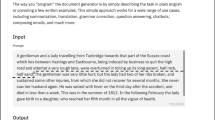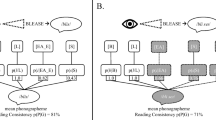Abstract
Written argumentative texts were collected from 7 to 14 year-old-children in two situations: one in which a scientific-like issue was to be debated (formal discourse: FD) and one in which an opinion was to be defended (natural discourse: ND). The structure of the supporting arguments advanced in the individual protocols were analyzed. Various structural indices were defined and calculated for each protocol, and then input into a factorial correspondence analysis.
In both the FD and ND conditions, the main factorial axis opposes long protocols to short ones. This finding held true even though the other indices were weighted to compensate for protocol length. The length variable thus appears to be a discourse characteristic as such. Furthermore, long FD protocols were associated with embedded structures and a substantial amount of rewording. Long ND protocols had a low degree of embedding, and contained many accumulated arguments and thematic breaks.
The second axis opposes sequential chaining of arguments to argument coordination in FD. In ND, it opposes the absence of structure and many rewordings to a variety of more or less highly organized structures, but without sequential chaining.
These analyses revealed some interesting differences between formal and natural discourse: the key role played by sequential chaining in FD versus the insignificance of this type of structure in ND, and the important but different role of rewording in FD and ND. Protocol length was found to be strongly linked to subject age: older subjects have more arguments at their disposal. But in addition to acquiring the ability to write longer texts, older children are able to use different structures for argumentation, depending on the type of referential space involved.
Similar content being viewed by others
References
Apotheloz, D., & Mieville, D. (1989). Cohérence et discours argumenté. In M. Charolles (Ed.),The resolution of discourse (pp. 68–87). Hambourg: Buske Verlag.
Bronckart, J.-P. (1985).Le fonctionnement des discours. Neuchâtel: Delachaux et Niestlé.
Brossard, M., Gelpe, D., Lambelin, G., & Nancy, B. (1990). Comparaison à l’école élémentaire entre deux types de discours: discours d’opinion et discours physique.Cahiers d’acquisition et de pathologie du langage, no 718, 103–119.
Coirier, P., Coquin-Viennot, D., Golder, C., & Passerault, J. M. (1990). Le traitement du discours argumentatif: Recherches en production et en compréhension.Archives de Psychologie, 58, 315–348.
Espéret, E. (1984). Processus de production: Genèse et role du schéma narratif dans la conduite de récit. In M. Moscato & G. Pieraut-Le Bonniec (Eds.),Langage: construction et actualisation, (pp. 179–196). Paris: Presses Universitaires de France.
Espéret, E., Coirier, P., Coquin, D., & Passerault, J. M. (1987). Limplication du locuteur dans son discours: Discours formel et naturel.Argumentation, I, 155–174.
Gaonac’h, D., & Espéret, E. (1985). Fonctions des temps verbaux dans la production de récits libres: évolution génétique entre 4 et 8 ans.Bulletin de Psychologie, 38, 705–716.
Grize, J. B. (1982).De la logique à l’argumentation. Genève: Droz.
Grize, J. B. (1990).Logique et langage. Paris: Ophrys.
Mieville, D. (1985). connaissance et schématisation.Bulletin de Psychologie, 38, 625–630.
Schneuwly, B. (1984).Le texte discursif écrit à l’école. Thèse de doctorat (no. 128). Université de Genève.
Schneuwly, B. (1988).Le langage, écrit chez l’enfant. Neuchâtel: Delachaux et Niestlé.
Author information
Authors and Affiliations
Rights and permissions
About this article
Cite this article
Coquin-Viennot, D., Coirier, P. Structures of argumentative discourse: Effects of type of referential space. Eur J Psychol Educ 7, 219–229 (1992). https://doi.org/10.1007/BF03172827
Received:
Revised:
Issue Date:
DOI: https://doi.org/10.1007/BF03172827




